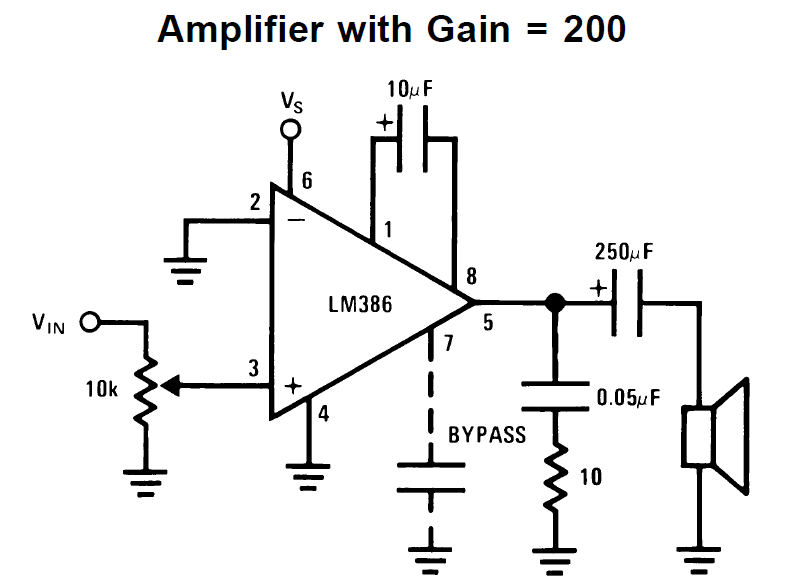
Yes, here's the classic LM386 again, but this time I want to filter things so I don't hear random internal noises. This circuit is connected to the same board as a few microcontrollers and an LCD (let's call it a working computer). And when each character on the display gets refreshed every 100uS, I hear through the speaker a low volume ticking sound which suggests local interference.
I still have a coupling capacitor from my sound chip on-board to VIN, but instead of 10uF, I made it 0.1uF. My setup is equivalent to the pot turned to max volume (10K to ground). Someone suggested I should add a capacitor across the same resistor
Question is what kind of frequencies should I really input-filter for and how do I select the proper capacitors?
I mean initially, I chose 10uF because I wanted all the signal to go through but when I ran the 10K and 10uF values through an online high-pass filter calculator, I get about 1.5 Hz
So I changed the 10uF to 0.1uF and after running sound tests on my system (when sound card is playing audio) before and after the capacitor change, the sound results are the same.
Then I go to the online calculator again changing 10uF to 0.1uF and I get 159 Hz filter.
Question is just how high of a minimum value can I set this filter to be? I mean what would be the lowest audio frequency the mass public would be able to hear anyway when it comes to normal audio and speech?
And do I put a capacitor across the 10K resistor to set it as a low-pass filter to under 20 Khz or can I even go lower and have people not notice audio degradation?

